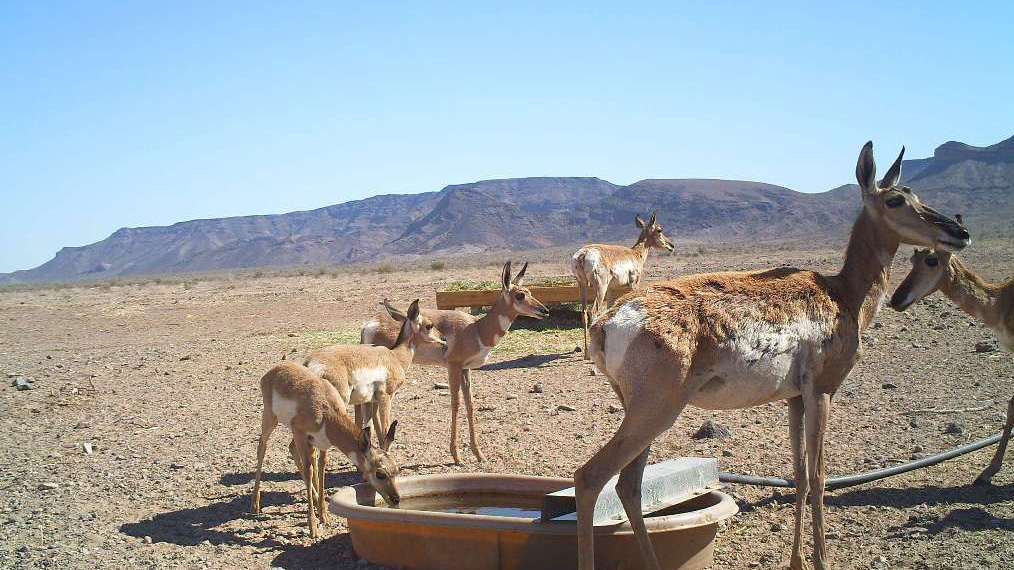By Craig Springer, USFWS.
The flat shrill of insects that go sight unseen rises and falls like the rhythmic lapping of water on a sandy shoal. It is sandy here to be sure—but there’s little natural water. It’s locked up in the pulp of cactus or the waxy leaves of sparse green plants. Some of that plant matter is food for Sonoran pronghorn found nowhere else in the U.S. than in the far southwest corner of Arizona.
Searing summer heat reaching 120 degrees Fahrenheit scorches the Sonoran Desert floor. It is exceedingly arid and the space between low shrubs and patches of grasses are wide with more stone and sand than vegetative matter.
The Sonoran pronghorn is one of five subspecies of the animal iconic of the open plains of North America. Its prominent skeletal features described by zoologists in the 1940s and its smaller size and light pelage set it apart from the other more common forms. Where the animal naturally ranges—the Sonoran Desert—is a small geographic area compared to the range of the other pronghorn subspecies.
Though adapted to desert living and built for speed, the animal cannot outrun the need for water. Water is a limiting factor in Sonoran pronghorn conservation and that became known following a dreadful drought in the mid-2000s.
In response, the Arizona Game and Fish Department built eighteen water catchment systems via funding made possible by excise taxes paid by firearms, ammunition and archery manufacturers and Federal Aid in Wildlife Restoration. The structures catch rain, collect it underground and let the water gravity-feed to a lower point where wildlife can drink it.
The larger of the catchments collect enough water during intense summer afternoon storms from July to September to store and deliver the water until replenished when rain falls upon the land the following summer.
The water has improved the lot of Sonoran pronghorn. Population monitoring continues on the ground and in the air. Some animals carry radio transmitters. Every two years aircraft fly over the same lines above Sonoran pronghorn habitats, spotting and counting the number of animals seen and heard by telemetry, to determine the number of animals in the wild. Captive breeding continues as well at Cabeza Prieta and Kofa national wildlife refuges.
Water provisioning is an important technique for animals across the dry ranges of the arid Southwest and West. In addition to pronghorn, these catchments benefit elk, bighorn sheep, and many other species, and many state fish and wildlife agencies build and maintain them with funding from the Wildlife and Sport Fish Restoration program.







